10 Car Fire Statistics in the UK: 2025 Update
-

- Last updated:
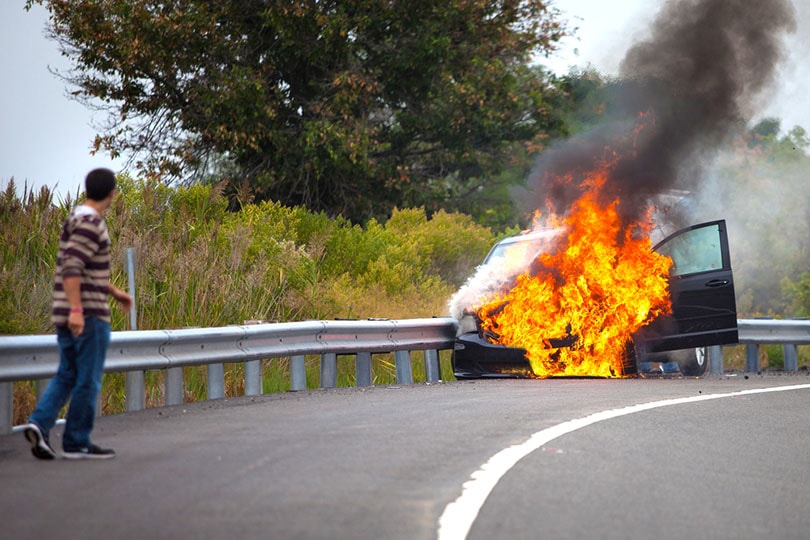
Note: This article’s statistics come from third-party sources and do not represent the opinions of this website.
Car fires and vehicle fires can be terrifying, and they do lead to casualties and loss of life. Thankfully, improvements in vehicle safety and technology mean that the number of vehicle fires is decreasing, but the introduction and greater ownership of electric and hybrid vehicles lead to concern.
Extinguishing electric vehicle fires is more difficult than putting out petrol car fires but are far less common. Most manufacturers actually recommend allowing a controlled blaze to burn out of its own accord, but this isn’t always a feasible option for fire brigades.
Read on for 10 car fire statistics in the UK, including information on electric car fires as well as details on some of the common causes of this kind of blaze.
Click below to jump ahead:
The 10 Car Fire Statistics in the UK
- About 100,000 car fires happen in the UK each year.
- There were 19,256 serious road vehicle fires reported from July 2022 to June 2023.
- Vehicle fires accounted for 29% of primary UK fires.
- Car fires have increased by 3.8% from the previous year.
- From 2022 to 2023, 239 EV-related fires were recorded.
- Hybrid vehicles have an average of 3,474 fires per 100,000 sold.
- Petrol and diesel cars are almost 20 times more likely to catch fire when compared to EVs.
- 65% of the car fires are started deliberately.
- Of all the yearly car fires, about 35,000 are accidental.
- Fire response teams reach vehicle fires in an average of 10 minutes and 4 seconds.
 Vehicle Fire Statistics
Vehicle Fire Statistics
1. About 100,000 car fires happen in the UK each year.
(Service4Service)
This number covers a broad range of car fires, from a small fire that is barely smoking to vehicles being engulfed in flames. However, this shows that car fires are not entirely rare incidents, even in small countries like Great Britain.
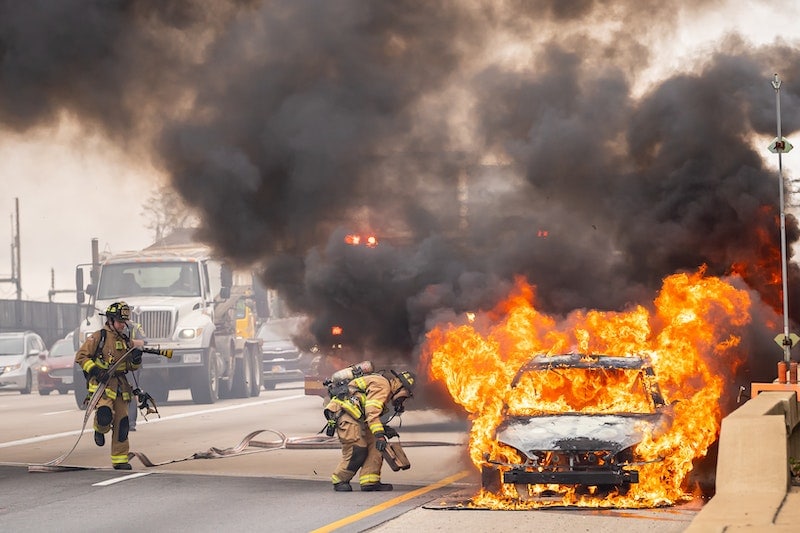
2. There were 19,256 serious road vehicle fires reported from July 2022 to June 2023.
(UK Government)
According to UK government data, these car fires fall under the category of “primary fires”, a fire that poses a serious threat to people or properties. So, out of the roughly 100,000 car fires, over 19,000 of them are quite serious.
3. Vehicle fires accounted for 29% of primary UK fires.
(UK Government)
Almost a third of all serious fires that occurred in the UK were car fires. This is the second most common primary fire, with dwelling fires accounting for 40%.
4. Car fires have increased by 3.8% from the previous year.
(UK Government)
While an increase of 3.8% in car fires across the nation is not positive, it is still a 13% decrease from 2018, when 22,035 serious car fires were reported.
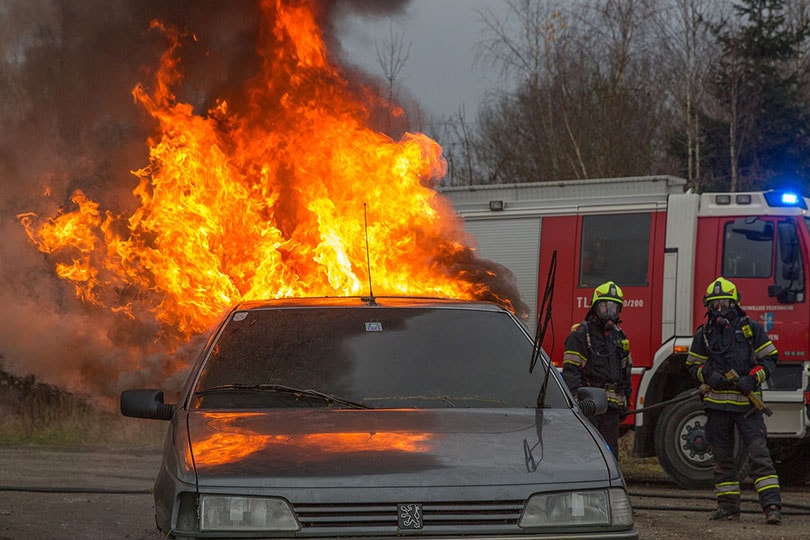
Electric Vehicle Fires
5. From 2022 to 2023, 239 EV-related fires were recorded.
(AutoCar)
The electric vehicles’ popularity has increased so it is important to be aware of EV-related fires. Thankfully, the number is quite low. Out of the 100,000 car fires—ranging from minor to major—only 239 of them were from electric vehicles.
6. Hybrid vehicles have an average of 3,474 fires per 100,000 sold.
(TheDriven)
Hybrid vehicles have a much higher rate of fires than EVs, with 2.8% of the 100,000 sold having a fire incident. Hybrids still need some fuel to operate, though not as much as standard vehicles. But this still puts them at risk of fire if there is an accident or improper maintenance.
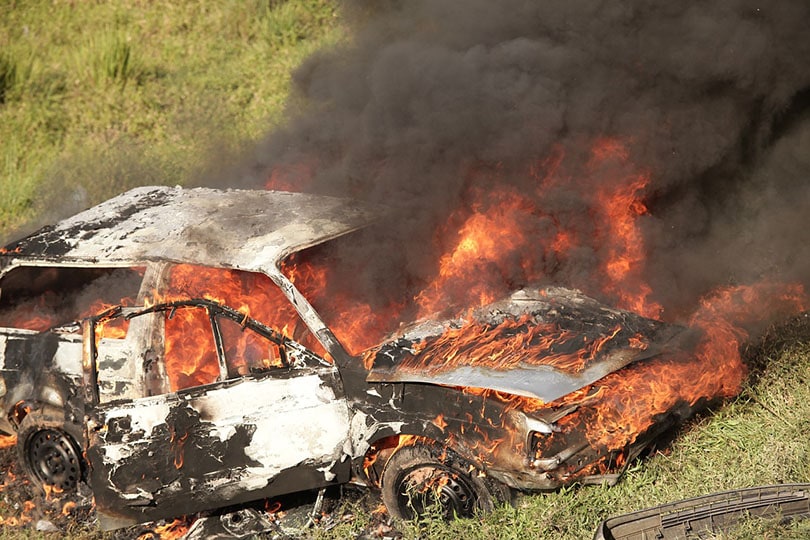
7. Petrol and diesel cars are almost 20 times more likely to catch fire when compared to EVs.
(AutoCar)
While there are some concerns with fires occurring in EV and hybrid vehicles, petrol and diesel cars are still 19 times more likely to catch fire. Why? Simply because diesel and petrol cars use flammable fuel.
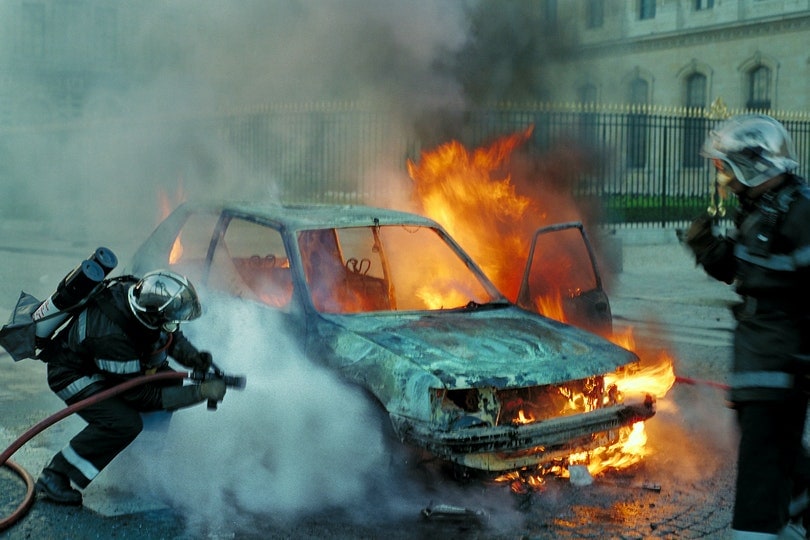
Car Fire Causes
8. 65% of the car fires are started deliberately.
(Service4Service)
Surprisingly, most car fires are not caused by accidents on the road; rather, people deliberately burn cars. They do it to hide evidence of a crime. In addition, people burn their cars to try and claim insurance money or simply do it out of an act of vandalism or arson.
9. Of all the yearly car fires, about 35,000 are accidental.
(Service4Service)
While most car fires are started purposefully, the other 35,000 car fires that occur yearly are due to accidents, whether that be because of poor maintenance of the car or getting into a collision. Some cars can overheat, but this also falls under the category of poor maintenance.

10. Fire response teams reach vehicle fires in an average of 10 minutes and 4 seconds.
(UK Government)
Between July 2022 and June 2023, the average time it took for first responders to extinguish car fires was 10 minutes and 4 seconds. This is a slight increase from the last year at 13 seconds longer; however, there are more cars on the road and more fires to assist with.
 Frequently Asked Questions About Car Fires in the UK
Frequently Asked Questions About Car Fires in the UK
What Is the Most Common Cause of Vehicle Fires?
The most common cause of car fires is intentional arson or vandalism. This includes cars that are set ablaze after being stolen to cover the tracks of the thief. It also includes fires that started intentionally to make an insurance claim for the vehicle. Other possible causes include faulty wiring, problems with electric batteries, and poor vehicle maintenance.
How Can You Prevent a Vehicle Fire?
You should regularly make sure that your vehicle is well maintained. This can help reduce certain faults, such as damaged seals or faulty wiring, and will help reduce the risk of fire. Don’t ignore warning lights in your vehicle, either, because these could point to engine heating problems that can cause fires, albeit very rarely.
Can Electric Car Fires Be Put Out?
Although a lot of electric vehicle manufacturers recommend that fires be left to burn out naturally, this isn’t always an option for firefighters, and they may choose to try and extinguish the fire in other ways.
Civilians should never attempt to extinguish this kind of fire because a burning lithium-ion battery releases deadly chemicals that can prove fatal, and putting the fire out exposes the individual to these chemicals.
How Hot Is a Car Fire?
A car fire can reach temperatures of over 800ºC, which is several times hotter than the inside of a home oven. As such, it is important that you get away from a car that has caught fire or if you believe there is a fire in the engine. Experts advise that you release the bonnet using the lever inside the car but do not attempt to open the bonnet further.
Conclusion
Car fires are frightening, and if you witness smoke coming from under the bonnet, it can lead to panic. Fortunately, in a lot of cases, smoke does not necessarily lead to fire, and even when it does, the fire can usually be extinguished quickly.
But, while fatalities from car fires remain relatively low, there is still some risk, so you should follow guidance to pull over safely, release the bonnet, turn off the engine, and get to a safe position before calling the fire service.
Featured Image Credit: Photo Spirit, Shutterstock
Contents

 Vehicle Fire Statistics
Vehicle Fire Statistics


